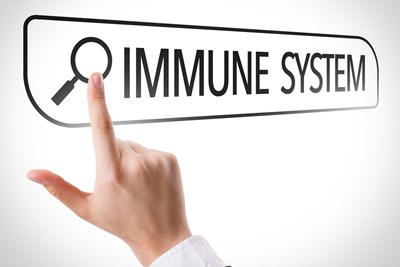Your immune system is a complex collection of cells, tissues, and molecules that protect your body against numerous pathogenic microbes and toxins in your environment. There are two different types of reactions that your immune system has when defending your body against microbes. There are reactions of innate immunity and reactions of adaptive immunity. Therefore, innate and adaptive immunity are two equally important aspects of your immune system, though they perform completely different jobs.
Innate Immune System
The innate immune system consists of cells and proteins that are always present and ready to mobilize against microbes at the site of an infection. The most important components that make up the innate immune system include:
-
Physical epithelial barriers: This is the tissue that makes up your skin and the linings of your gastrointestinal, respiratory, and urogenital tracts. By using the tight junctions that bind the individual cells tightly together, the epithelium provides a strong physical barrier against invasion of pathogens.
-
Phagocytic leukocytes: While your skin is very effective at keeping out most germs, a small tear in the skin can still allow pathogens to enter your body. This is when the phagocytes come into play that patrol your body in search of invaders.
-
Natural kill (NK) cell: These cells are called “natural” killers because they are ready to kill as soon as they are formed. NK cells recognize and attach to infected cells then release enzymes and other substances that damage the outer membranes of cells.
-
Circulating plasma proteins: There are over 30 proteins that make up the complement system. The activation of all of the proteins is referred to as the complement cascade, which begins readying your body’s adaptive immune system.
Adaptive Immune System
If pathogens are able to evade or overcome your innate immune defenses, then your adaptive immune system is called into action. While your innate immune system is able to instantly respond to infections, the adaptive immune system needs time to adapt and learn to recognize them. However, once it has learned them, it is extremely effective at destroying them, as well as remembering certain germs that have previously infected your body and having a very quick response if they ever try to infect your body again. This is how vaccinations work: doctors trick your body into producing a memory of a particular infection by using a harmless version of a virus to create an immunity.
There are two different types of adaptive immune responses, including:
-
Humoral immunity: This is mediated by antibodies produced by B lymphocytes, which are formed in the bone marrow. There are receptors on the surfaces of B cells where antigens can attach. There are two stages of the B cell response, including the primary immune response and the secondary immune response.
-
Cell-mediated immunity: This is mediated by T lymphocytes, which are produced in the thymus. There are different types of T cells with different purposes, including Killer (cytotoxic) T cells, Helper T cells, and Suppressor (regulatory) T cells.
All of these functions work together to recognize and destroy any infections in your body that have made it past your innate immune system.




